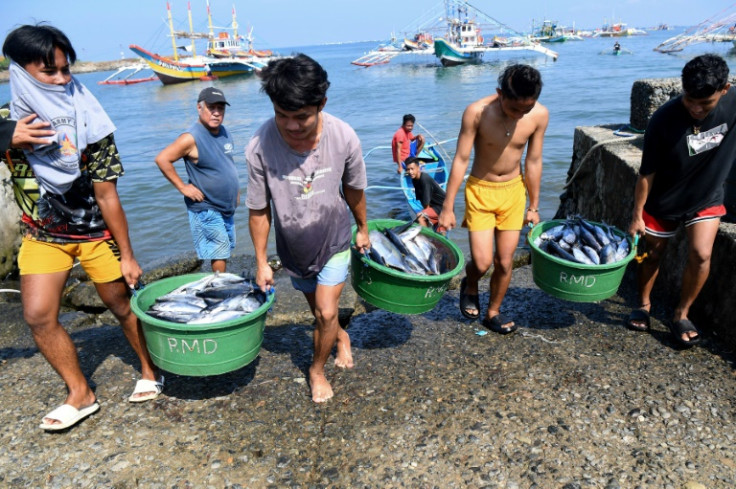Chinese Fishermen Accused of Poisoning Waters, Coral Reefs With Cyanide
The accusations have been made by the Philippines' Bureau of Fisheries and Aquatic Resources.

The Philippines has accused Chinese fishermen of poisoning the Scarborough Shoal with cyanide.
"These Chinese fishermen use cyanide," Nazario Briguera, a spokesperson for the Bureau of Fisheries and Aquatic Resources, said on Saturday, according to local media reports.
Scarborough Shoal lies off the northwestern Philippines. It is located in a tiny and uninhabited region in the disputed South China Sea. It falls within the Philippines' 200-nautical-mile exclusive economic zone (EEZ).
According to the 1982 United Nations Convention on the Law of the Sea (UNCLOS), a country has sovereign rights to explore, exploit, and manage the natural resources, whether living or non-living, that fall within the EEZ.
In 2012, a dispute over the shoal between the two nations escalated and China seized de facto control over the area. It is claimed by China, Taiwan, and the Philippines. China has since patrolled the region and often harasses Philippine fishermen found fishing in the region.
WATCH: President @bongbongmarcos says the Philippines will file a case against China if there is evidence of cyanide fishing in Scarborough Shoal @TheManilaTimes pic.twitter.com/ZBWPaFpA8N
— Catherine Valente (@tmtcathyvalente) February 20, 2024
Scarborough Shoal is essentially an atoll, approximately 120 nautical miles west of the Philippine island of Luzon. An atoll is a ring-shaped coral reef, island, or series of islets.
China claims the region as its own. Briguera has said that the Chinese fishermen used cyanide to "intentionally destroy Bajo de Masinloc (Scarborough Shoal) to prevent Filipino fishing boats to fish in the area".
He said that it has caused more than $17.8 million in damage, but added that the agency has yet to start a formal investigation into the matter.
"We will see clearer, and we will have proof or evidence that this is really being done by Chinese fishermen and, apparently, other foreign fishers," Briguera said,
Meanwhile, the Philippine Coast Guard has said that they have not found any evidence indicating that Chinese fishermen used cyanide.
"We don't have any scientific study or any evidence that would suggest that cyanide fishing in Bajo de Masinloc can be attributed to the Chinese or the Vietnamese fishermen," GMA News quoted a coast guard spokesperson, Commodore Jay Tarriela, as saying.
The use of cyanide to capture coral reef fish was rampant in the 1960s and 70s in the Philippines. The practice is not as rampant anymore. A study conducted by the Cebu-based Coastal Conservation and Education Foundation claimed that some fishermen from the Philippines still used cyanide in the South China Sea.
It "is still a major problem in Palawan and other areas where the live food fish trade is important," Dr Alan T. White, the former chief of party of the Coastal Resource Management Project in Central Visayas, told the Manila Bulletin last year.
© Copyright IBTimes 2025. All rights reserved.





















